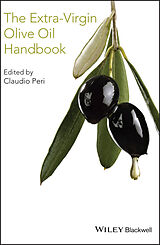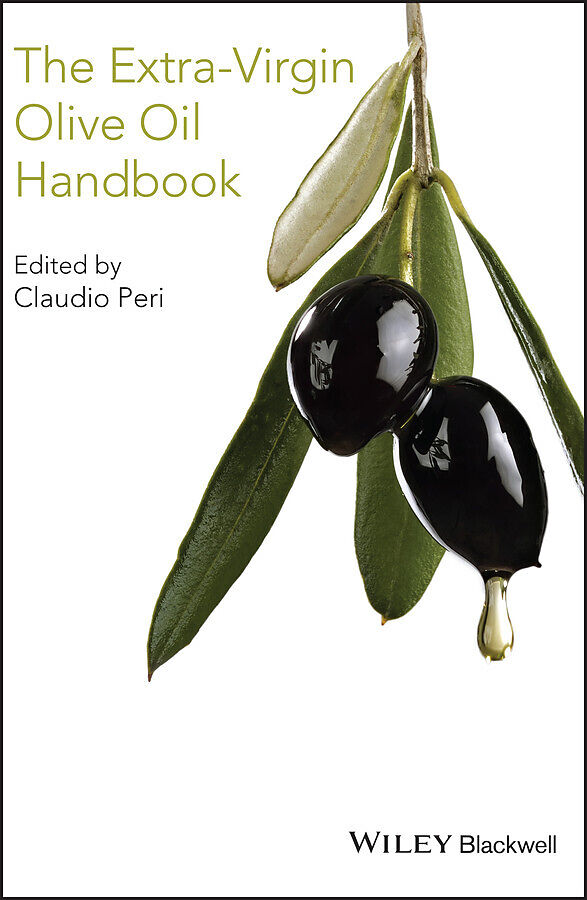Extra-Virgin Olive Oil Handbook
Format:
E-Book (EPUB)
EAN:
9781118460436
Untertitel:
Englisch
Genre:
Landwirtschaft, Gartenbau, Forstwirtschaft, Fischerei, Ernährung
Herausgeber:
Wiley-Blackwell
Anzahl Seiten:
384
Erscheinungsdatum:
07.03.2014
ISBN:
978-1-118-46043-6
According to European legislation, extra virgin is the top grade
of olive oils. It has a superior level of health properties and
flavour compared to virgin and refined olive oils. Mediterranean
countries still produce more than 85% of olive oil globally, but
the constant increase of demand for extra virgin olive oil has led
to new cultivation and production in other areas of the world,
including California, Australia, China, South Africa and South
America. At the same time, olive oil's sensory properties and
health benefits are increasingly attracting the attention and
interest of nutritionists, food processors, manufacturers and food
services. Progress and innovation in olive cultivation, harvesting
and milling technologies as well as in oil handling, storage and
selling conditions make it possible to achieve even higher quality
levels than those stipulated for extra virgin oils. As a
consequence, a new segment - excellent extra virgin olive
oils - is increasingly attracting the attention of the market
and earning consumers' preference.
The Extra-Virgin Olive Oil Handbook provides a complete
account of olive oil's composition, health properties,
quality, and the legal standards surrounding its production. The
book is divided into convenient sections focusing on extra virgin
olive oil as a product, the process by which it is made, and the
process control system through which its quality is assured. An
appendix presents a series of tables and graphs with useful data,
including conversion factors, and the chemical and physical
characteristics of olive oil.
This book is aimed at people involved in the industrial production
as well as in the marketing and use of extra virgin olive oil who
are looking for practical information, which avoids overly academic
language, but which is still scientifically and technically sound.
The main purpose of the handbook is to guide operators involved in
the extra virgin olive oil chain in making the most appropriate
decisions about product quality and operating conditions in the
production and distribution processes. To these groups, the most
important questions are practical ones of why, how, how often, how
much will it cost, and so on. The Extra-Virgin Olive Oil
Handbook will provide the right answers to these key practical
considerations, in a simple, clear yet precise and up-to-date
way.
Autorentext
About the Editor Claudio Peri is Professor Emeritus in Food Science and Technology at the University of Milan, Italy, and President of the Centre for Quality Studies of the Academy of Georgofili, Florence, Italy.
Zusammenfassung
According to European legislation, extra virgin is the top grade of olive oils. It has a superior level of health properties and flavour compared to virgin and refined olive oils. Mediterranean countries still produce more than 85% of olive oil globally, but the constant increase of demand for extra virgin olive oil has led to new cultivation and production in other areas of the world, including California, Australia, China, South Africa and South America. At the same time, olive oil's sensory properties and health benefits are increasingly attracting the attention and interest of nutritionists, food processors, manufacturers and food services. Progress and innovation in olive cultivation, harvesting and milling technologies as well as in oil handling, storage and selling conditions make it possible to achieve even higher quality levels than those stipulated for extra virgin oils. As a consequence, a new segment excellent extra virgin olive oils is increasingly attracting the attention of the market and earning consumers' preference. The Extra-Virgin Olive Oil Handbook provides a complete account of olive oil's composition, health properties, quality, and the legal standards surrounding its production. The book is divided into convenient sections focusing on extra virgin olive oil as a product, the process by which it is made, and the process control system through which its quality is assured. An appendix presents a series of tables and graphs with useful data, including conversion factors, and the chemical and physical characteristics of olive oil.
This book is aimed at people involved in the industrial production as well as in the marketing and use of extra virgin olive oil who are looking for practical information, which avoids overly academic language, but which is still scientifically and technically sound. The main purpose of the handbook is to guide operators involved in the extra virgin olive oil chain in making the most appropriate decisions about product quality and operating conditions in the production and distribution processes. To these groups, the most important questions are practical ones of why, how, how often, how much will it cost, and so on. The Extra-Virgin Olive Oil Handbook will provide the right answers to these key practical considerations, in a simple, clear yet precise and up-to-date way.
Inhalt
List of Contributors xi Acknowledgements xiii Introduction 1 Part I The product 3 1 The extra-virgin olive oil chain 5
Claudio Peri 1.1 The legal classification and denomination of olive oils 5 1.2 The subject of this handbook 7 1.3 The extra-virgin olive oil chain 7 1.4 Yield and quality 8 Reference 10 2 Virgin olive oil: definition and standards 11
Manuela Mariotti 2.1 The legal definition of virgin olive oil 11 2.2 Quality standards of virgin olive oil 12 2.3 Authenticity standards of virgin olive oil 19 Reference 19 3 The composition and nutritional properties of extra-virgin olive oil 21
Manuela Mariotti and Claudio Peri 3.1 Triglycerides and fatty acids 21 3.2 The nutritional role of olive oil triglycerides and fatty acids 26 3.3 Minor components and antioxidants in extra-virgin olive oil 28 3.4 The colour and odour components of extra-virgin olive oil 31 3.5 Conclusion 32 References 33 4 The sensory quality of extra-virgin olive oil 35
Mario Bertuccioli and Erminio Monteleone 4.1 Introduction 35 4.2 The official evaluation of defects and positive sensory attributes 36 4.3 The sensory profile 41 4.4 Sensory performance of extra-virgin olive oil-food pairing 49 Annex 4.1: The method for evaluating extra-virgin olive oil sensory profiles 53 References 56 5 Olive tree cultivars 59
Luana Ilarioni and Primo Proietti 5.1 Introduction 59 5.2 Cultivars 59 5.3 The cultivar's relationship to productivity 60 5.4 The cultivar's relationship to oil quality 64 5.5 Common-sense recommendations 65 References 67 6 The role of oxygen and water in the extra-virgin olive oil process 69
Bruno Zanoni 6.1 The conflicting roles of oxygen 69 6.2 The role of water in the transformation of phenolic compounds 71 References 74 Further reading 74 7 Extra-virgin olive oil contaminants 75
Cristina Alamprese 7.1 Introduction 75 7.2 Contaminants of virgin olive oil 78 References 84 Part II The process 87 8 Olive harvesting 89
Luigi Nasini and Primo Proietti 8.1 Introduction 89 8.2 Olive ripening 90 8.3 Harvesting systems 91 Annex 8.1: Methods for olive maturity assessment 101 References 105 9 Olive handling, storage and transportation 107
Primo Proietti 9.1 The autocatalytic nature of olives and oil degradation 107

Leider konnten wir für diesen Artikel keine Preise ermitteln ...
billigbuch.ch sucht jetzt für Sie die besten Angebote ...
Die aktuellen Verkaufspreise von 3 Onlineshops werden in Realtime abgefragt.
Sie können das gewünschte Produkt anschliessend direkt beim Anbieter Ihrer Wahl bestellen.
Loading...
Die aktuellen Verkaufspreise von 3 Onlineshops werden in Realtime abgefragt.
Sie können das gewünschte Produkt anschliessend direkt beim Anbieter Ihrer Wahl bestellen.
| # | Onlineshop | Preis CHF | Versand CHF | Total CHF | ||
|---|---|---|---|---|---|---|
| 1 | Seller | 0.00 | 0.00 | 0.00 |
